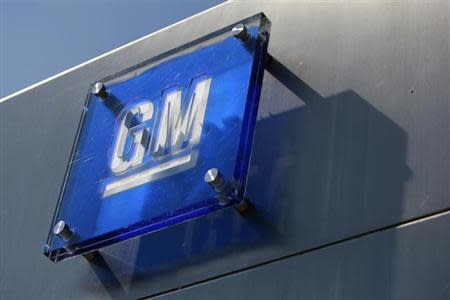What GM owes its customers — and American taxpayers

Executives at General Motors (GM) thought they had put the 2009 federal bailout behind them in December, when the Treasury Dept. sold its last GM shares, officially ending the government’s involvement with the company. But the specter of the bailout now looms over GM’s recall of 1.4 million cars, creating an added challenge in the way the automaker deals with a safety issue linked to at least 12 fatalities and an unknown number of injuries.
Fixing the recalled cars will be a simple, inexpensive procedure, requiring mechanics at GM dealerships to replace a faulty ignition switch with a new one. GM says the parts ought to be arriving at dealerships sometime in April. Once the parts are available, GM will notify owners to bring their cars in for a free fix, which ought to take about 30 minutes, plus waiting time. (Complete details, including a list of the recalled cars, are available here.)
In the meantime, owners of a suspect vehicle should use the key alone, without a ring or anything else that could add weight to the ignition mechanism, to prevent the key from slipping from the "on" to the "off" position. GM is also offering a $500 discount owners of the recalled cars can apply to the purchase or lease of any new GM vehicle, although that amounts to a rather small 1.6% discount on a typical $30,000 car. GM customers who ask through a dealer might also be able to get a loaner car until the recall is fully under way, or other special treatment if they’re insistent.
An image problem
Despite those fixes, GM still faces an obvious image problem from the revelation that it waited more than 10 years to fix a problem that had major safety implications. The automaker now confronts choices that could either worsen the bad publicity or establish GM as a new paragon of accountability. The thorniest problem may stem from a provision of the automaker’s 2009 bankruptcy proceeding that shields it from liability for accidents that occurred before July 10, 2009. Under the bankruptcy terms, liability for such incidents resides with the entity now known as “old GM,” not with the automaker operating today.
GM has already settled with some victims of crashes, or their families, that relate to the ignition-switch problem. But the new revelations, showing GM investigated the problem as early as 2004 and decided not to issue a recall, are a brand-new problem. Upcoming Congressional hearings may bring more troubling information to light. And the Justice Dept. is investigating whether to press criminal charges against GM. Those developments seem sure to encourage lawsuits by other victims — legitimate or otherwise. And some people who have already settled with GM might have a basis for reopening their cases and asking for more.
The 2009 bailout adds a twist to the PR problem. U.S. taxpayers lost about $10 billion on the bailout. That places no additional legal burden on GM. But if the company were to fight with potential victims using typical brass-knuckle legal tactics — especially if it invokes the liability shield established in bankruptcy — it would seem especially heartless. News organizations, meanwhile, are revving up their coverage of accident victims who happened to be driving the GM models in question.
Auto-safety advocate Clarence Ditlow has called for GM to set up a $1 billion compensation fund for victims of crashes caused by the ignition problem. GM may have more incentive than usual to do something like that. “It makes sense to set up a victims’ fund,” says David Whiston, a senior equity analyst at Morningstar. “It’s going to be bad PR if they don’t.” If GM does set up such a fund, he says, it could be considerably larger than $1 billion without harming GM’s financial performance by much.
The cost of the recall alone is likely to be relatively small. Whiston says the biggest costs could come from two other sources: Lost future sales, should GM’s reputation suffer enough, and expenses related to litigation, including settlements and any possible fines. At the moment, it’s hard to estimate how high those costs might go, partly because of the unusual legal issues relating to the 2009 bankruptcy. But Whiston still considers GM stock a buy, based on strong products it has been turning out and the streamlined cost structure that resulted from bankruptcy. Analysts polled by S&P Capital IQ rate GM outperform, on average, one step short of a buy.
GM CEO Mary Barra, who’s only been in the job for two months, hasn’t yet made a public statement on the recalls. But so far, the company has seemed more contrite than it did during earlier standoffs with the government over safety issues. Of course, that comes only after GM declined to make a relatively cheap fix that could have saved lives. Which means an apology and a few bucks toward a new car probably aren’t enough.
Rick Newman’s latest book is Rebounders: How Winners Pivot From Setback To Success. Follow him on Twitter: @rickjnewman.

